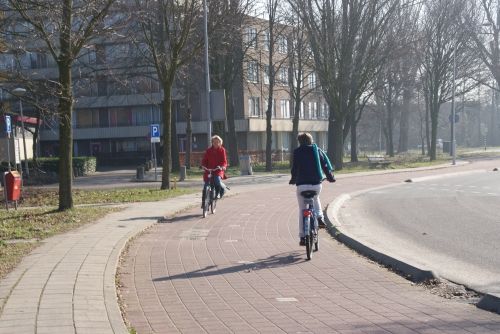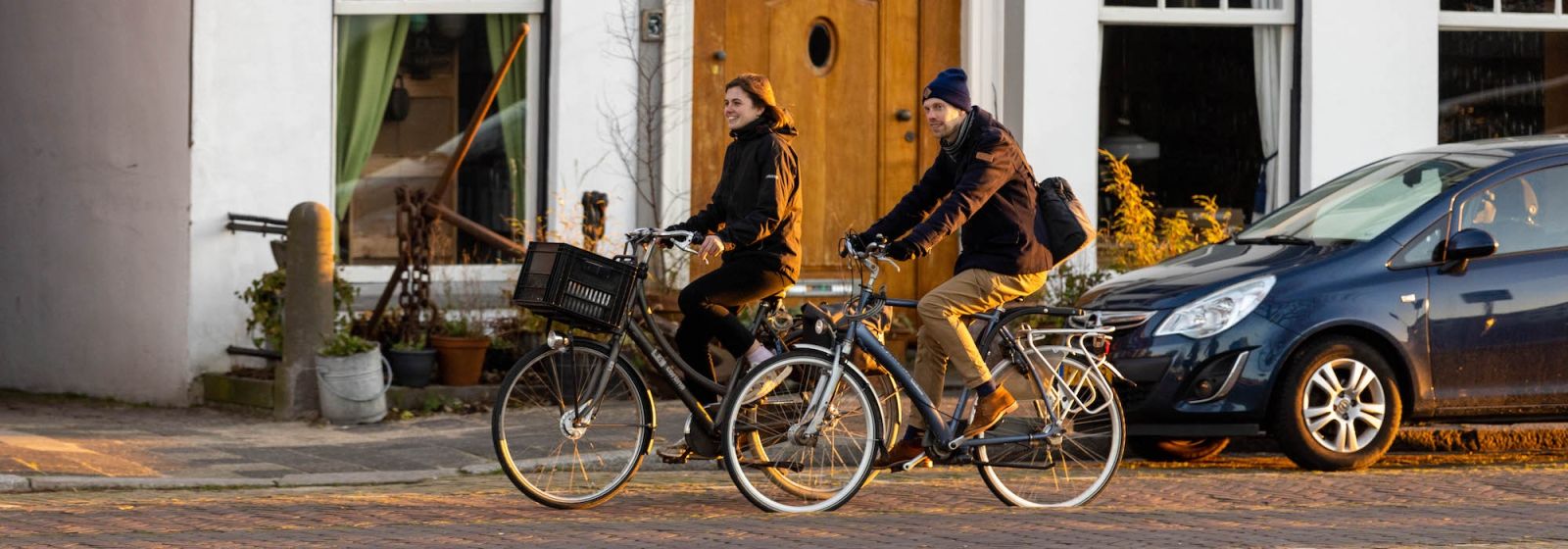
Complex situations
In order for you to travel safely, it is necessary that you know a few traffic rules. You should know where you can or cannot cycle, where you have the right of way and what the traffic signs means. Wageningen has several complex situations that may seem confusing. Click on a situation below to find more information on these locations.
Roundabouts
You will find many roundabouts in Wageningen. This section analyses the specific rules for roundabouts in greater depth. Mind the difference between the rules that apply in and outside built-up areas.
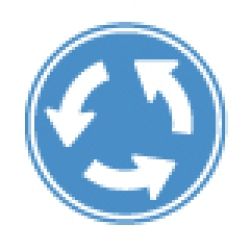
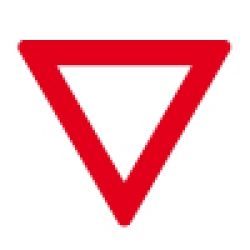
In built-up areas
If the roundabout does not have a separate cycle lane, you have to give right of way to the drivers or cyclists that are already on the roundabout. Once on the roundebout, you have the right of way. It will be easier to get on a roundabout that does have a separate cycle lane. You will usually have the right of way on the motorized traffic. This is indicated by the the give-way road markings (white priority triangles) for traffic exiting the roundabout.
You may have the right of way, but it is always a good idea to check and make sure that others are giving it to you. Especially cars and trucks exiting the roundabout can easily overlook your presence. Try to have as much eyecontact as possible.
Be especially cautious on roundabouts that have a two-way cycle track, as they can be confusing both for you as for the car drivers. They may not be expecting cyclists coming from their left! When exiting this type of roundabout, carefully indicate your intentions. This is not only cautious behaviour, but it also keeps the drivers from unnecessarily having to wait for your action.
Outside built-up areas
The priority rules on roundabouts outside built-up areas are fairly simple: cyclists never have the right of way over the motorized traffic. This is indicated through the use of give-way road markings (white priority triangles, see photo) on the cycle lane and the traffic sign (see above). You do not have the right of way on the motorized traffic entering the roundabout nor on the traffic exiting it (roundabout near Ede).
Refuges
- Refuges are safe places, halfway a road, where you can wait until it is safe to continue crossing.
- Since refuges often separate the two directions of traffic on busy streets, they provide the advantage that you do not have to pay attention to these two directions at the same time.
- There are refuges for both pedestrians and cyclists.
- You are not allowed to cycle over a refuge for pedestrians. As they are not expecting to find you there, you could surprise or even scare them.
- You are allowed to walk over a refuge while pushing your bicycle (for example when accompanying a pedestrian or when having to walk due to a flat tire).
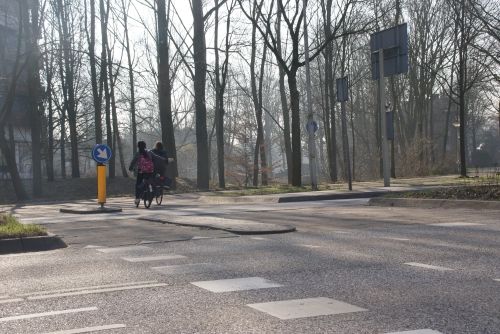
30 km zone
There are many 30 km zones in Wageningen. They are marked by the '30 zone' traffic sign. It indicates that the maximum speed in this area is 30 km per hour.
The 30km per hour limit is not only applied to this road, but to the whole area covered between this sign and the sign indicating its end: 'end 30 zone'.
Walking and cycling in this zone is safe and pleasant.
Most crossings in the 30km zone are crossings without traffic signs, so you must stop for all road users approaching you from the right. Also, it is good to know that there are no seperate bicycle lanes in these zones. Since the speed of the motorised traffic is low, it is safe to share the road with cyclists.
Turning points, Grintweg
- Cycle to the point where you can turn left.
- Show your intention by holding out your left hand.
- Look carefully over your left shoulder and straight ahead, to make sure that no traffic is coming from those directions.
- If traffic is coming from those directions, wait patiently until it has passed.
- You can now cross the street!
Beware! Many cyclists tend to cross this road diagonally. This can be very dangerous, as drivers may not be expecting it!
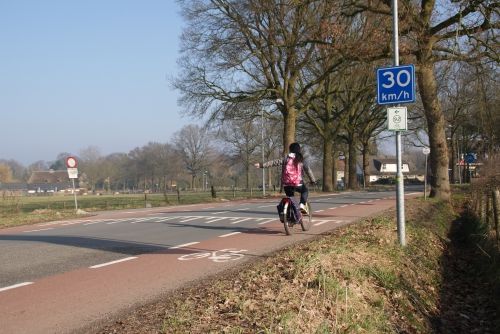
Mansholtlaan / Grintweg
- When cycling over the cycle path on the right side of the Manshoflaan, you should remain on that path.
- The cycle path takes a right turn around the restaurant.
- It is prohibited to cycle over the motorway on the left side of the restaurant. This is indicated through the 'cycling prohibited' sign: a round white sign with a red border, containing the image of a bicycle.
No access for bicycles or for non-motor-powered invalid carriages
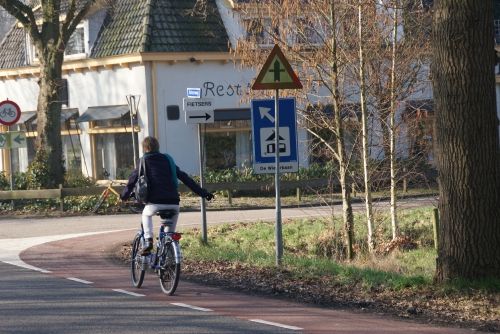
Nijenoord Allee
- This road has a separate crossing. Pay attention to the other traffic!
- Make sure that you are cycling on the right-hand side when crossing the road.
- You can see “sharks teeth” marking the beginning of the crossing. They indicate that you should give right of way to all other traffic on the road.
- When possible, cycle up to the refuge.
- Again, stop at the sharks’ teeth markings and wait until all other traffic has past.
- You can now take the second part of the crossing. Indicate the direction you are about to take by holding out the correct hand.
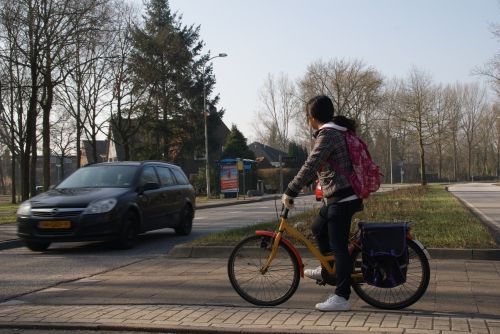
Roundabout Kortenoord Allee / Marijkeweg
Roundabouts are a very common sight in the Netherlands. They are seen as safe crossings that come with clear rules. These are the traffic rules that apply on roundabouts:
- There is a cycle path: use it!
- As you enter the roundabout, you will find 'shark teeth' marking its beginning: remember that the other traffic has right of way!
- Take the roundabout. Once on it, you have the right of way over the traffic that wants to enter or exit the roundabout.
- Always cycle in a counter-clockwise direction. Cycling clockwise can be very dangerous as the other traffic is not expecting cyclists to come from that direction.
- Clearly indicate your intentions by holding out your hand. This goes both for entering as exiting the roundabout.
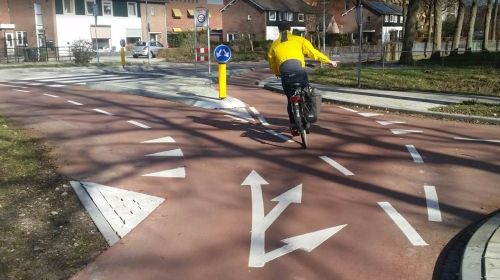
Roundabout Rooseveltweg
Roundabouts are a very common sight in the Netherlands. They are seen as safe crossings that come with clear rules. These are the traffic rules that apply on roundabouts:
- There is a cycle path: use it! Enter it on the beginning of the roundabout.
- This is a rather big roundabout, don’t worry that you cannot see everything. Focus on the part of the roundabout that you are using.
- As you enter the roundabout, you will find 'sharks teeth' marking its beginning: remember that the other traffic has the right of way!
- Take the roundabout: once on it, you have the right of way over the traffic that wants to enter or exit the roundabout.
- Always cycle in a counter-clockwise direction. Cycling clockwise can be very dangerous as the other traffic is not expecting cyclists to come from that direction.
- Clearly indicate your intentions by holding out your hand. This goes both for entering and exiting the roundabout.
- On the Rooseveltweg their are two similar roundabouts on a row.
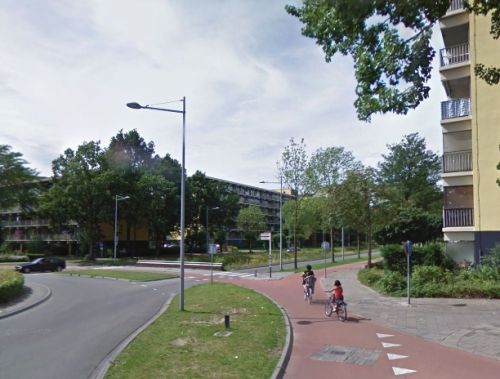
Gerdesstraat / Stationsstraat / Plantsoenstraat
- This is a complex location, as the traffic seems to be coming from all directions.
- Take a good look around and clearly indicate your intentions. Have eye contact with the others!
- Pay special attention to the pedestrian crossing, as pedestrians always have right of way at a zebra path.
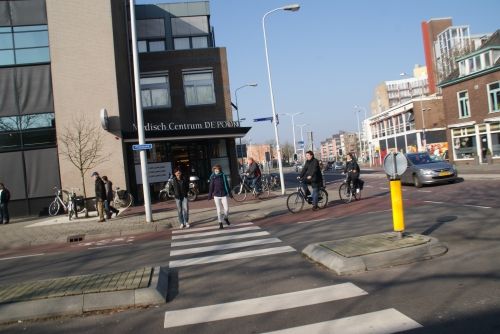
Hoogstraat
- This part of Wageningen is a pedestrian area. However cycling is allowed outside shopping hours.
- If you are however traveling by bicycle, you should get off and either push it or park it in one of the bicycle parking facilities!
- You can recognize pedestrian areas by the blue, round traffic sign with the image of a walking adult and child. It is often combined with an extra sign placed below it, in this case stating that there is an exception on outside schopping hours.
.png)
A two-way cycle path
- These paths can be recognized by the dotted line on the middle path. A two-way-cycle path is often also indicated by a blue two-arrow sign: one sign points upward, the other downward.
- As in general traffic, you are supposed to cycle on the right path.
- Overtaking is only permitted if there is enough space and there is no oncoming traffic.
